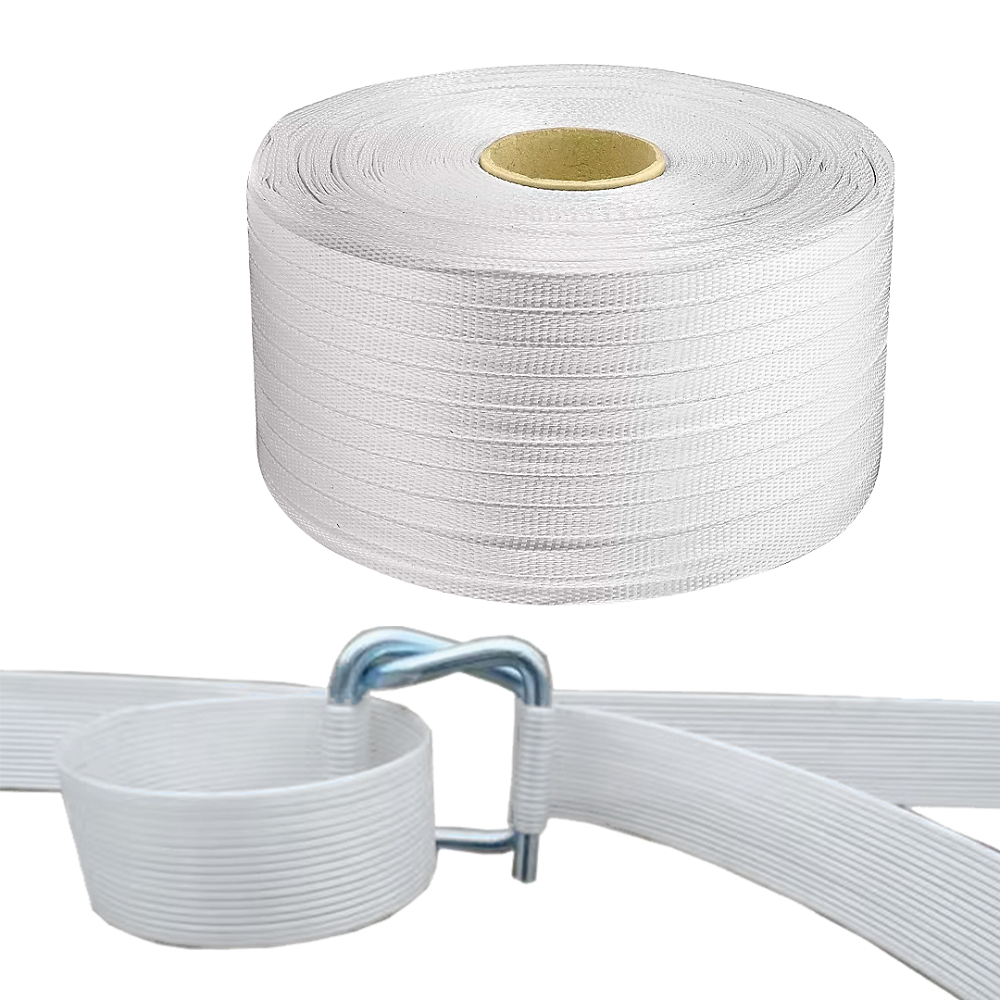Your Guide to Using Composite Straps Effectively
- Views:0
- Author:Packaging
- Publish Time:2025-07-08
- Origin:site
Composite straps are revolutionizing the packaging and securing of heavy loads, offering a lightweight yet incredibly strong alternative to traditional strapping materials. This guide will help you understand how to effectively use composite straps, ensuring your products are secured safely and efficiently.

1. Understanding Composite Straps
Composite straps are made from high-tenacity polyester fibers combined with a polymer coating, resulting in a durable and flexible strapping solution. They are ideal for various applications, including logistics, construction, and manufacturing. Before using composite straps, familiarize yourself with their properties:
Strength: Composite straps provide high tensile strength, making them suitable for heavy loads.
Lightweight: They are easier to handle than steel strapping, reducing operator fatigue.
Non-Abrasive: The smooth surface prevents damage to the cargo, minimizing product loss.
2. Choosing the Right Composite Strap
Selecting the appropriate composite strap is crucial for successful application. Consider the following factors:
Width and Thickness: Choose a strap width that matches your load size. Common widths range from 1/2 inch to 2 inches. Thicker straps offer greater strength for heavier loads.
Breaking Strength: Ensure the strap's breaking strength exceeds the weight of the cargo you intend to secure. This precaution prevents failures during transport.
3. Required Tools for Application
Using composite straps effectively requires the right tools. Here are the essentials:
Tensioners: These tools apply the necessary tension to the strap, ensuring your load is secure.
Sealers: Depending on the type of composite strap, you may need specific seals or buckles to complete the strapping process.
Cutters: A good quality cutter is essential for cleanly cutting the strap to the desired length.
4. Step-by-Step Application Process
Follow these steps to use composite straps effectively:
Prepare Your Load: Ensure the cargo is stacked securely and is stable before applying the strap.
Measure and Cut: Measure the required length of the composite strap and cut it using a suitable cutter.
Thread the Strap: Place the strap around the load and thread it through the tensioner.
Tighten the Strap: Use the tensioner to pull the strap tight around the load, ensuring it is secure but not overly tight to avoid damage.
Seal the Strap: Use the appropriate seal or buckle to secure the ends of the strap together.
Trim Excess: If necessary, trim any excess strap for a clean finish.
5. Safety Tips
When using composite straps, keep these safety tips in mind:
Wear Protective Gear: Always wear gloves and safety glasses to protect yourself from potential injuries.
Inspect Tools and Straps: Regularly check your tools and straps for wear or damage to ensure safe operation.
Follow Manufacturer Guidelines: Always adhere to the guidelines provided by the manufacturer for optimal performance.
Conclusion
Composite straps are an excellent choice for securing heavy loads due to their strength, lightweight nature, and ease of use. By following this guide, you can effectively utilize composite straps to enhance your packaging operations.
If you're ready to switch to high-quality composite straps or need expert advice, contact us today. Let's elevate your packaging solutions together!












